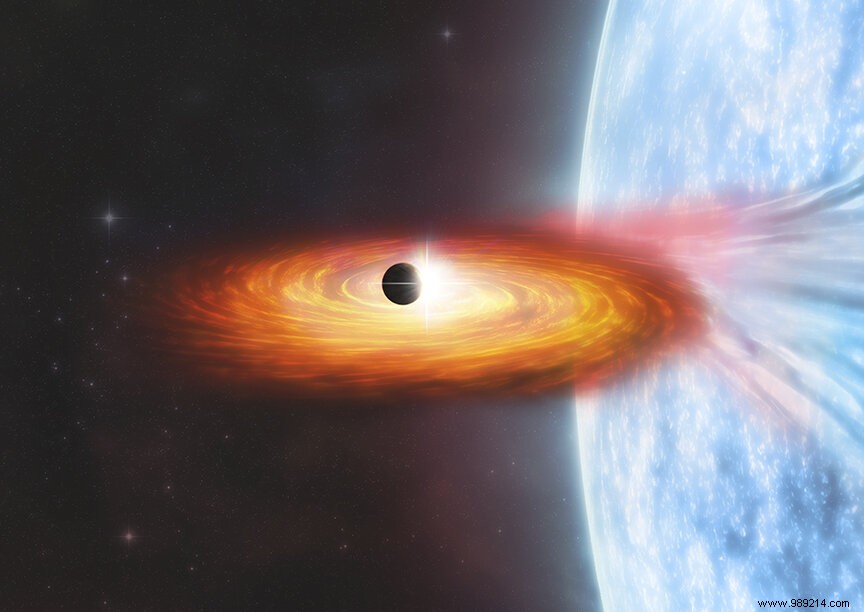A team of astronomers announces that they have unearthed the very first planet outside the Milky Way. This potential world could be evolving in a binary system 27 million light-years from Earth in the spiral galaxy Messier 51 (M51), also known as the Whirlpool galaxy.
Since the detection of the first exoplanet in 1995, astronomers have identified more than 4,500 new worlds. Some are relatively "nearby", moving within light years of Earth, while others, located many thousands of light years away, will forever be inaccessible to us. However, these planets have one thing in common:they all evolve in our galaxy, the Milky Way. But could it be that we can, one day, unearth a planet beyond our galactic borders? Possible, evidenced by this intriguing study published in Nature Astronomy .
This possible extra-galactic planet would be located in the spiral galaxy Messier 51 (M51), also called the Whirlpool galaxy because of its distinctive profile. You will find it in the Constellation of the Hounds, 27 million light-years away.
This new result is based on the famous transit method, which consists of probing small dips in stellar luminosity caused by the repeated passages of a planet in front of its star from our point of sight. Usually, astronomers rely on ground-based and space-based telescopes, like Kepler or TESS, to focus on optical light troughs. Here, astronomer Rosanne Di Stefano, from the Center for Astrophysics | Harvard &Smithsonian (CfA) in Cambridge, Massachusetts, focused on dips in the brightness of X-rays received from bright X-ray binaries, courtesy of NASA's Chandra Observatory.
These binary systems usually consist of a neutron star or black hole drawing gas from a companion star in close orbit. The caught, overheated material then shines on X-rays.
Because the region producing bright X-rays is small, a planet passing in front of it could block all of those rays. The technique could make it possible to detect exoplanets at much greater distances than current optical light transit studies, which must be able to detect tiny dips in light, as the planets involved become completely drowned in the brightness of their star.

According to the study, this possible world would evolve in a binary system called M51-ULS-1 thus implying a black hole or a neutron star in orbit around a companion star with a mass about twenty times that of the Sun . The X-ray transit isolated by the researchers would have lasted about three hours during which the emissions died out completely.
Based on this and other information, the researchers estimate that the planet must be the size of Saturn, orbiting the neutron star or black hole at a distance of nearly three billion kilometers.
Could this gradation of X-rays have been caused by the passage of a cloud of gas and dust, and not by a planet? The researchers consider this to be an unlikely explanation, as the characteristics of the observed event are not consistent with the passage of such a cloud.
While this is an intriguing study, more analysis will be needed to confirm whether or not the news is confirmed. However, there is a catch… This possible planet will not intersect with its binary partner for about 70 years, thus thwarting any attempt at observation for decades.